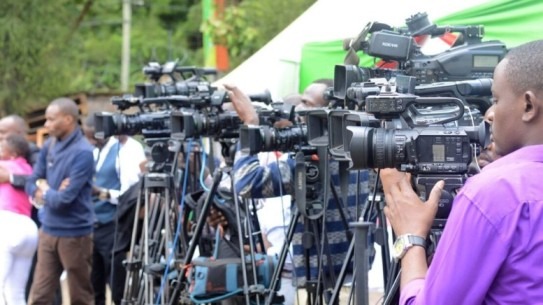Time to take stock and review press freedom
By PD columnist, May 3, 2023Today is World Press Freedom Day 2023, an occasion to rethink the place of press freedom in our democracy and the media as a catalyst for pluralism and diversity of voices.
An independent press is a gateway to political and socio-economic progress. May 3 is thus a time to appraise the link between press freedom, freedom of expression and other key human rights and whether we are on target.
It is another ‘call to action’ moment for stakeholders to take stock of the industry’s journey in the past tumultuous year. Undeniably, last year was a mixed bag for an industry smarting from deep-down pressures such as unfriendly regimes, digital revolution, diminishing revenues and fake news phenomenon among others. Yes, this important day must be a stark reminder to all of us – at individual, governmental, regional or global levels – of the pressing need to consistently and fearlessly mobilise action in supporting the media in doing its work and by respecting every commitment to press freedom.
The more than 300 players from the government, private sector, media, audiences, civil society and partners, marking the day with us have a chance to share data and information, reflect on the issues affecting press freedom, draw lessons, and develop action plans. This year’s Special 30th anniversary celebration of World Press Freedom Day themed “Shaping a Future of Rights: Freedom of expression as a driver for all other human rights” must be a special call to countries and their leaders to repurpose press freedom as the key to enjoyment of all other human rights. Today’s anniversary also coincides with the 30th centenary of the Vienna Conference and its Declaration and Programme of Action on Human Rights, and with the 75th anniversary of the Universal Declaration of Human Rights. While progress has been made in the promotion and protection of human rights including freedom of expression, the latest status of press freedom and freedom of expression report by the United Nations Educational, Scientific and Cultural Organisation (UNESCO) raises concerns that should every one of us who cares about the vibrancy of the media sector. UNESCO has sounded the alarm on the worrying decline of press freedom levels around the world, confirming that 85 per cent of the world’s population experienced a decline. While Kenya’s position in the global World Press Freedom Rankings improved from 103 in 2021 to 69 in 2022, the country experienced the highest violations against media and journalists in 2022.
The Media Council of Kenya (MCK) documenting 104 incidences which were the highest in the last five years. Nonetheless, Kenya has one of the most vibrant media industries in the region. But operations of local media houses have not been without internal and external challenges such as the digital disruption, dwindling revenues, lack of training opportunities, intimidation and physical attacks among others. Last month, the brutality meted on journalists during opposition-led protests in the country proved the unending threats the media faces. We have seen senior government officials train their guns on media houses over alleged biases linked to how the 2022 elections were covered.
Admittedly, some of the threats facing journalists today have been measured with far-reaching consequences. Last week, we saw authorities in Kilifi bar the media from covering the Shakahola cult deaths without any justification.
As a country, we must push the limits. The industry needs the goodwill of every player. It is not about lack of laws. Kenya is a signatory to international instruments on freedom of expression, media freedom and access to information which have been domesticated through Articles 33, 34, and 35 of the Constitution.
— The writer, David Omwoyo, is the Media Council of Kenya chief executive officer
More Articles

